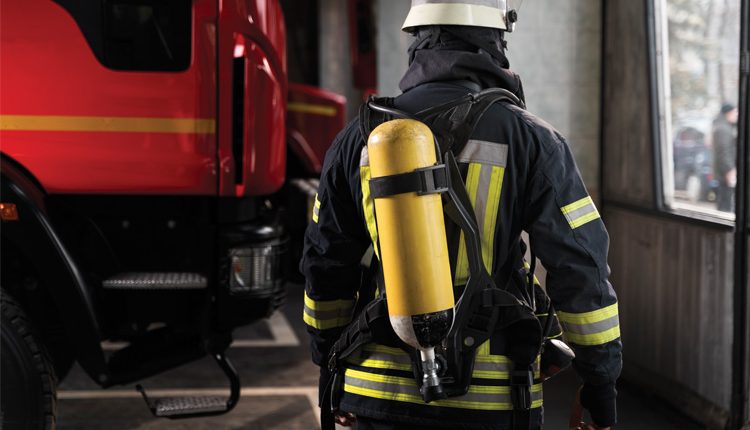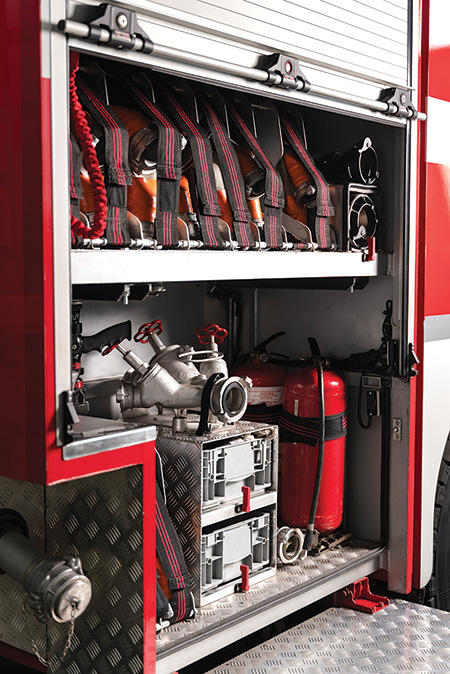Addressing the challenges posed by fire accidents in India requires a comprehensive and collaborative effort. By understanding the current scenario, promoting technological advancements, and enhancing awareness, the country can build a more resilient and fire-safe environment. The fire fighting equipment industry plays a crucial role in this endeavor, and continuous innovation and improvement are essential to meet the evolving challenges of fire prevention and management in India.
In recent years, the firefighting equipment industry has witnessed significant innovations aimed at enhancing the efficiency, safety, and effectiveness of firefighting operations. These innovations span a range of technologies and solutions designed to address the evolving challenges faced by firefighters. Here are some notable innovations in firefighting equipment:
Fire-Resistant Materials
Development of advanced fire-resistant materials for personal protective equipment (PPE), including flame-resistant fabrics and heat-resistant gear, to enhance firefighter safety in high-temperature environments.
Smart Helmets and Augmented Reality (AR)
Integration of smart helmets with AR technology to provide firefighters with real-time information, such as building layouts, temperatures, and vital signs. This enhances situational awareness and improves decision-making during firefighting operations.
Fire Extinguishing Drones ![FIREFIGHTING-EQUIPMENT]() Safety
Safety
Use of drones equipped with fire-extinguishing capabilities for rapid response to wildfires and industrial fires. These drones can reach inaccessible areas and deliver fire retardants or water to suppress flames from the air.
Robotics and Remote-Controlled Devices
Firefighting robots and remotely operated vehicles are deployed to navigate hazardous environments. These devices can be equipped with cameras, sensors, and firefighting tools to assess situations, locate victims, and suppress fires in areas too dangerous for human entry.
High-Pressure Water Mist Systems. Adoption of high-pressure water mist systems that disperse fine water droplets to suppress fires. This technology is effective in controlling various types of fires while minimizing water usage and collateral damage.
Thermal Imaging Cameras
There are quite a lot of advancements in thermal imaging technology for firefighting applications, allowing firefighters to see through smoke and darkness. This aids in locating victims, identifying fire hotspots, and navigating through complex environments.
Personal Alert Safety System (PASS) Upgrades
Integration of advanced sensors and communication systems into PASS devices worn by firefighters. These enhancements include automatic distress signal transmission, GPS tracking, and biometric monitoring to improve firefighter safety and expedite rescue operations.
Collaborative Robotics (Cobots)
Implementation of collaborative robotic systems that work alongside human firefighters. These cobots can assist with tasks such as carrying equipment, reconnaissance, and monitoring environmental conditions, reducing the physical burden on firefighters.
Fire-Resistant Foam Technology
Development of innovative fire-resistant foam formulations for extinguishing flammable liquid fires. These foams create a protective barrier to prevent reignition and enhance the overall effectiveness of firefighting efforts.
Predictive Analytics and AI for Fire Prevention
Utilization of artificial intelligence (AI) and predictive analytics to identify potential fire hazards before they escalate. These systems analyze data from various sources, including sensors and historical data, to detect patterns and predict fire risks.
Compact and Portable Fire Extinguishers
Design of compact and portable fire extinguishers with advanced features, such as extended reach nozzles, eco-friendly extinguishing agents, and intuitive operation, making them more user-friendly and effective in various environments.
Fire-Resistant Building Materials
Integration of fire-resistant building materials and construction techniques to enhance the fire resilience of structures. This includes the use of fire-retardant coatings, flame-resistant insulation, and innovative building designs.
As technology continues to advance, the firefighting equipment industry is likely to see further innovations aimed at improving the safety and effectiveness of firefighting operations in diverse and challenging environments. These innovations play a crucial role in safeguarding both firefighters and the communities they serve.


 Safety
Safety